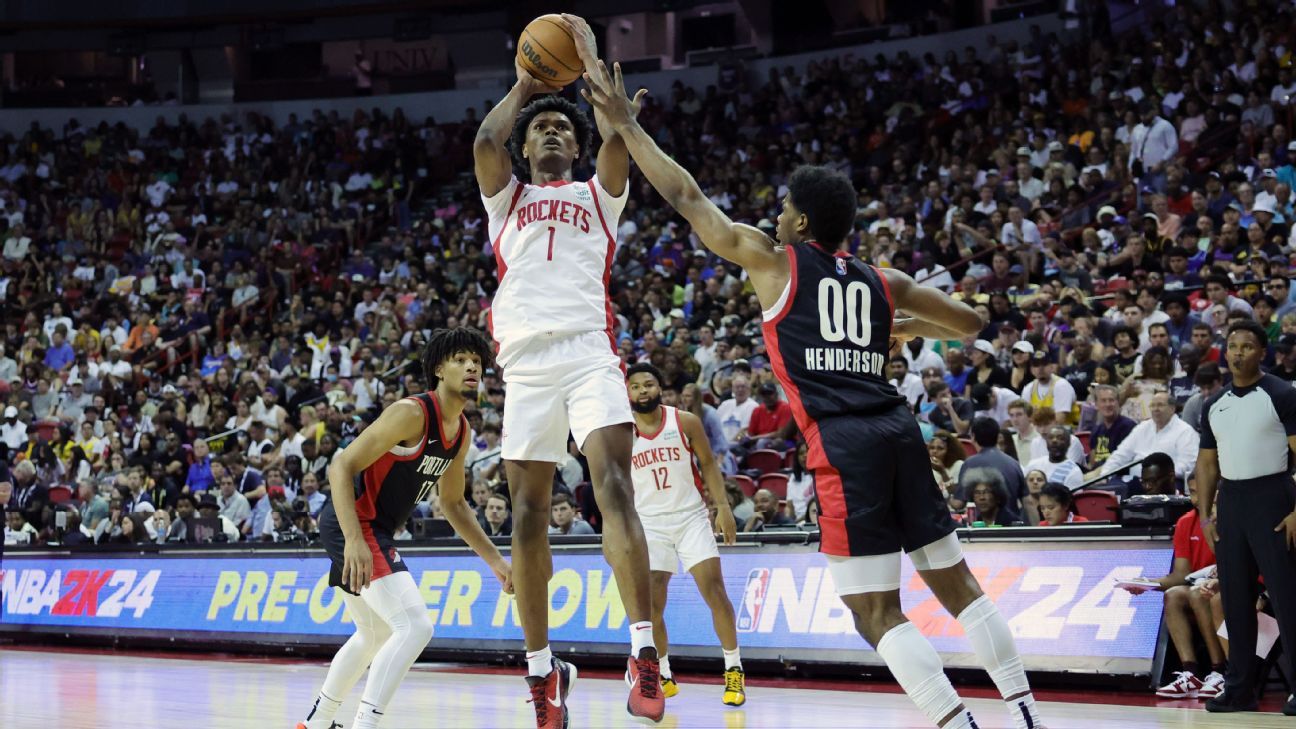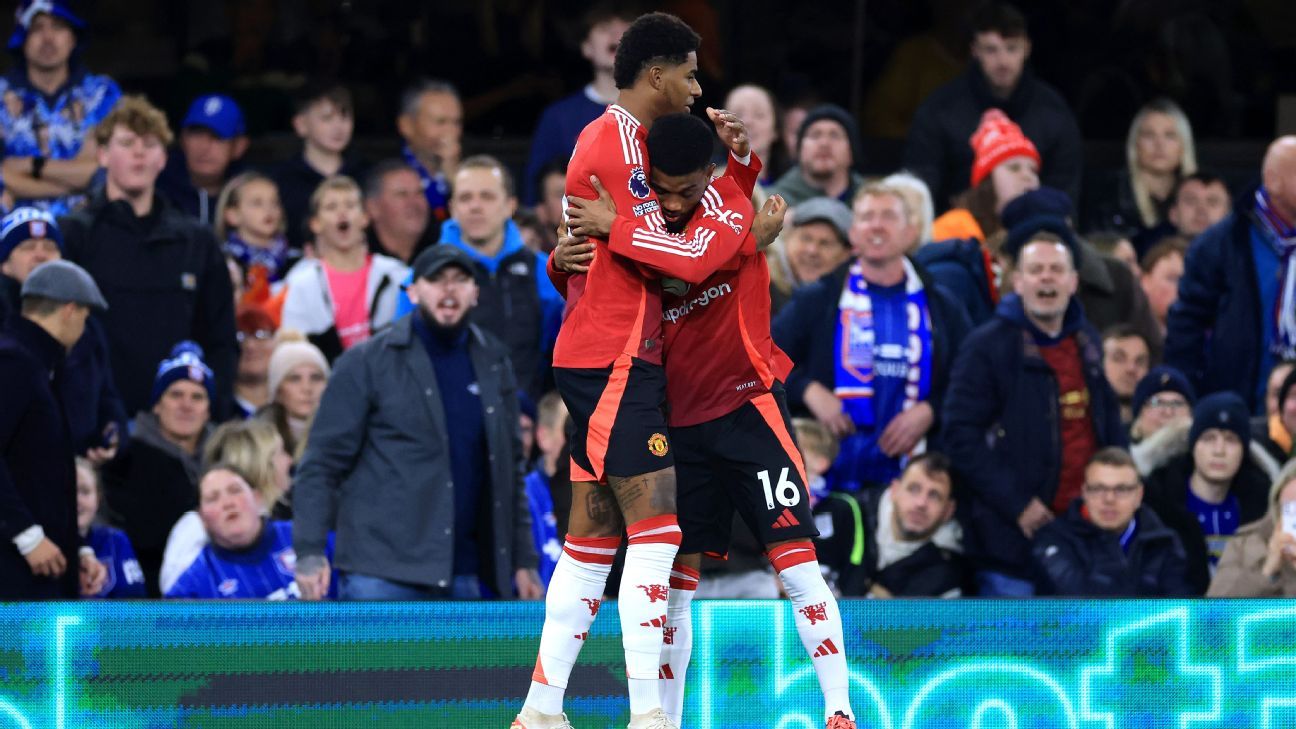
EIGHT VIDEO CAMERAS, each shooting 240 frames per second, surrounded one of the three courts at Overtime Elite's state-of-the-art, 103,000-square-foot facility in Atlanta. Ten of the program's players, including two top-five picks in the recent NBA draft, were going through what looked to be a simple shooting routine: 25 free throws, 25 midrange jumpers, 25 3-pointers from the top of the arc.
This process has occurred twice now, first in January and again in May, as part of a partnership between Overtime Elite, a professional league for 16- to 20-year-olds that serves as an alternative for elite high school, NCAA or the G League Ignite, and Breakaway Data, a startup that has developed a biomechanics shooting lab inspired by Driveline Baseball, a data-driven performance training program that has been revolutionary in that sport.
Breakaway Data, which first worked with quarterbacks before expanding to other positions, had a similar setup in an ancillary gym as part of the NBA's tech summit in connection with the Las Vegas summer league.
Its cameras track the shooters' movements in 24 joint angles, creating thousands upon thousands of data points which are compiled in a five-page report for each player. The reports are a multicolored collection of graphs, charts and bullet-point insights that focus on three aspects of shooting: the set point (lower body), shot sequencing (path of arms and hands) and release point (elbow and wrist).
"I thought it was very informative," Overtime Elite product Amen Thompson, drafted fourth overall by the Houston Rockets, told ESPN. "Not everything works for everybody, but that [data] can't really be a bad thing. It can only help to get as much information as possible. I felt like that's what it gave us."
Thompson and his twin brother, Ausar, who was drafted one pick later by the Detroit Pistons -- prospects who project as stars if they develop as shooters -- didn't actually see the reports breaking down the biomechanics of their shots, much less study them.
That was intentional.
A 20-YEAR-OLD can't be expected to consume complicated biomechanical data -- such as degrees of a shot path angle, the body's vertical and horizontal velocities at release or the shoulder angle velocity -- and synthesize it into practical shot adjustments. For that matter, neither can most NBA veterans.
"In terms of making it understandable for them, that's the challenge for me," Overtime Elite vice president of health, performance and development Markus Klusemann told ESPN. "We're working together to be able to break down this really complex information into some easy takeaways that any player or coach can understand. You don't want to overload them too much."
Klusemann's goal is to use the reports to come up with "three things, max, but usually it's one to two" for each player to focus on improving. Amen Thompson, for his part, recalls focusing on improving the mechanics of his lower body, specifically his ankle mobility and hip positioning, as the data indicated he relied on his arms much more than the average shooter.
"We are still early in the data analytics game, and the best teams who do [utilize] the data have really strong interpreters," Shane Battier, a 13-year NBA pro and two-time champion who is an investor and adviser for Breakaway Data, told ESPN. "You still need people to explain how this is practical and what this means in the development of an athlete.
"As a player, you just want to know, am I on the right track? As a player, you're looking just for every edge that you can find, obviously ethically, and if there's something that can boost my 3-point shooting by two percentage points, that's real money. For the bottom line of a player, that makes a huge, huge, huge difference."
As Dave Anderson, a former Houston Texans wide receiver who is Breakaway Data's CEO and co-founder, told ESPN: "Our special sauce is turning that information into basketball speak."
The next step, then, is for coaches to come up with drills that specifically work on the targeted areas.
"It's only useful if you use appropriate training methodologies," Klusemann said. "The biomechanical analysis doesn't tell you how to do it, but it allows you to study that. We work on someone's shot and say they've gotten better, but other than makes and misses and competition stats, there's been no way to really prove that. This allows us to say, 'We want to improve this player's wrist-release point,' and then measure that improvement."
IN THE MODERN NBA, coaches tend to be cautiously open to analytical input. They've become accustomed to filtering through lineup data and advanced statistics showing the efficiency of various play types and the players involved. They accept that their training and performance staffs often rely heavily on biomechanical data to make determinations on players' workloads. They can see the potential benefit of using that data in developing skills as well.
"I think all that stuff is great," Pistons coach Monty Williams told ESPN, "but also I never want the technology to take away from the feel and just being in the gym."
Williams notes, for example, that the technology can't measure whether a player is exhausted or what his mindset is while attempting a shot. Breakaway Data's program is limited to the basic shooting routine, but the company expects that it can eventually be used to track practice and game action.
"I don't think a biomechanical analysis is the end-all, be-all," Klusemann said. "In general, it's one tool from the entire toolbox."
Both Williams and Rockets coach Ime Udoka -- the Thompson twins' new head coaches -- mentioned that not all players are comfortable with the same shooting motion, as biomechanically sound as it might be. Udoka specifically cited the unconventional follow-through used by Reggie Miller, a Hall of Famer and historically elite shooter.
"I've seen some people with ugly shots become great shooters based on their work ethic," Udoka told ESPN. "So there's not an exact science to it, but there are some technical things that obviously help people's shooting percentage go up, and it's very similar a lot of times. You take the data and look at it, no doubt, but it's always repetitions. Some people learn to shoot with the mechanics they have really well."
Battier describes Breakaway Data's basketball mission as "an exploration of if there is an optimal biomechanical profile to become an elite shooter," but the company's approach, he said, is not necessarily one-form-fits-all.
It'd be foolish, of course, to suggest an outstanding shooter alter his form to pursue biomechanical perfection. But Breakaway's data can identify inconsistencies in a player's shot and correlate them to inefficiency.
For example, the reports show whether there are biomechanical trends for an individual player that correlate to accuracy. Does he tend to miss short when he has a shallower shot path with a lower shoulder angle? Is there variation in the wrist set point at release that factors into the ball's trajectory?
Battier says he believes a biomechanical shooting lab can eliminate much of the guesswork -- replacing it with scientific answers when players feel the need to make tweaks to their shot.
Battier laughs when he recalls the most important shot adjustment he made in his career. He was mired in a miserable slump during the 2013 playoffs, going 2-of-25 from 3-point range over an 11-game span that included his first career postseason DNP-CD in Game 7 of the Eastern Conference semifinals. The ball felt funky coming out of his hand during pregame warmups, he said, so he decided to aim to hit the left side of the rim.
It worked. Battier snapped out of the slump, shooting 9-of-12 on 3s in the Miami Heat's two wins over the San Antonio Spurs in Games 6 and 7 of the Finals. But Battier, one of the first players to delve deeply into analytics, would have preferred data over dumb luck.
"It's not the holy grail," Battier said of biomechanical data analysis, "but it's an answer."















 Phone: (800) 737. 6040
Phone: (800) 737. 6040 Fax: (800) 825 5558
Fax: (800) 825 5558 Website:
Website:  Email:
Email: 






